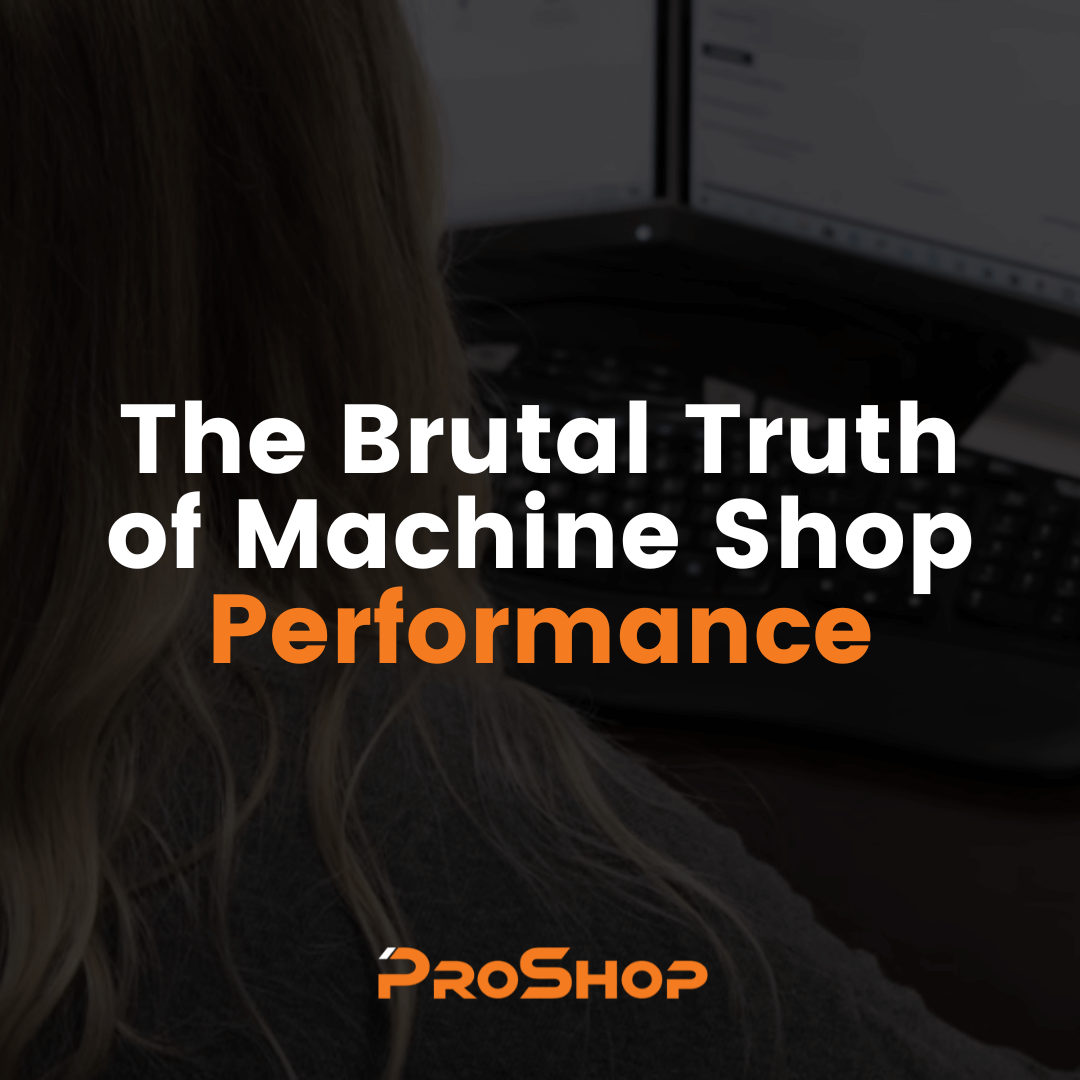Process
& Scheduling
Management
Maintenance
Management
& Inspection
& Material Planning
Financial Data
Management
Written by: Paul Van Metre
One of the most impactful things any shop can do to ensure success is to identify and focus their efforts on clients that are a perfect fit for them. There are many attributes which collectively feed into the equation of whether a customer is a good fit or not. Every shop has types of parts and work they are very good at, and things that aren’t in their wheelhouse. Maybe your shop is really good at large inconel castings in low volume, maybe it’s high volume Swiss parts for aerospace applications, perhaps your shop is a bit of a generalist, or maybe you specialize in quick turn small intricate parts requiring lots of tiny cutters. Whatever the answer is, there are companies out there that need parts that match your exact type of speciality, and there are clients who don’t need those kinds of parts. The more you can focus on the types of parts and clients who align with your speciality, the more profitable your shop will be.
Your Best Fit Customers are at the Center of the Bullseye
I often think of client fit as being represented by a bullseye. The outer rings of a bullseye are the types of clients that are a pretty good fit, but there may be aspects of the relationship that are not as good a fit. Maybe it’s their need for short lead times, price sensitivity, cosmetic parts, materials, or the fact that they send purchase order changes (POC) all the time. Or maybe the buyers are just jerks! (That’s a thing…) Sometimes you’ll have a client that is a great fit in the areas that matter most, but not in all areas – as all attributes aren’t created equally. Maybe a client makes revision changes a lot, but they always pay well for the hassle of dealing with them, so they are a very profitable client. The very center of the bullseye represents your perfect fit clients. Those clients that are aligned with all the things you are best at and care about the most. You know what it’s like to work with perfect fit clients – it’s awesome!! And, every shop knows what it’s like to work with clients who are not a good fit for them. It can really suck!
I recently ran across some photos and videos from years ago at my old shop – Pro CNC – that reminded me how seriously we took this topic!! I certainly remembered that we focused on always aligning ourselves with good fit clients, but I had forgotten that we had taken it to the level of creating scorecards and grading each client on multiple attributes. As you can see in this scorecard below, we have graded this client on 15 different attributes, plus also scoring them on revenue scale ($1.25M/year in this case) and consistency (very), collectability (no issues), industry (aerospace and defense), and even what tier in the supply chain they are in (1-3). Ultimately we put them into our “Partners” category – the highest category of 5 we used. It’s a pretty in-depth scorecard, and reveals just how serious we were about really understanding good fit clients.
Create Client Scorecards
On this scorecard you can see the following categories which we graded on an A-F scale. This particular client was one of our largest and best fit clients. They got an A or B in every category.
Communicate Client Scores to The Team
As I watched the video I saw myself addressing our team at one of our monthly all-company staff meetings. I was describing how some of our clients, while generally acknowledged as a PITA (pain in the ass), were actually very profitable clients overall. Having a discussion with the team about why it’s worthwhile to acknowledge that and understand which clients are really driving profit in your shop, which is one of the most important aspects of a client, is really important for team alignment and establishing trust between the sales department and the shop.
I went on to describe how grading and categorizing these clients really helped us to understand what made a good fit client for us, so we could proactively seek out other similar clients. While this process certainly takes effort and is a long term project, it’s definitely worth doing, as it will eventually lead to having a greater percentage of great fit clients and filtering out the ones who aren’t a good fit. I think every shop knows how much of a drag on resources it can be to manage a client who isn’t a good fit. It’s exhausting and distracts you from serving your best clients!
Grading Clients for any kind of Company
As an aside, we’ve done a similar thing here at Pro Shop (every type of company should grade their clients), identifying the types of shops who are a great fit for us, and the types of shops we don’t want to work with. There are many reasons why it matters so deeply that we only work with good fit clients. Primarily we want to have them be happy and successful, and it’s very hard on our team when it’s not a good fit. We’d much rather tell a company that there are other systems that will be a better fit for them than ProShop will be, if we believe they won’t be a good fit for our product and working with our team. We’d much rather turn down an order than take their money and have the experience go poorly for both of us. For us, the best alignment comes from the subjective side rather than the objective side of the equation. We know we’re great at CNC machining companies who are in regulated industries like aerospace, defense and medical, but it’s possible to have company that fits those criteria perfectly, but is a terrible fit because the leadership of the company isn’t aligned, or the company lacks discipline to follow through effectively on all the tasks required to adopt a new shop management solution like ProShop. When the cultural fit isn’t there, it’s best to avoid those deals with a 10 foot pole. Everyone will be happier in the long run. Here is the list of qualities that our best fit clients exhibit: They are eager, aligned, accommodating, friendly, humble, open to learning, adaptable, interested in continuous improvement, good communicators, have reasonable expectations, are interested in LEAN concepts/waste reduction, well organized, good at execution, collaborative, not adverse to change, and not adversarial.
We created a whole webinar on this topic, check it out below!
How Can ProShop Help?
Much of these things are going to be things that don’t have a lot of crossover with an ERP system, but there are some attributes that can and should be tracked in your ERP system. Revenue and profitability is certainly one of the most important, and ProShop does job costing better than any other system we’ve run across. It’s easy to get Net Profit of every job, down to the penny, and summarize what clients are the most profitable. You can also view a dashboard of revenue by client, and by industry, so you can see which clients and industries your revenue is coming from. It’s also very straightforward to report which clients have the most rejections, internally and externally so you can more easily score clients in these areas. ProShop also has areas within each client record where notes can be kept about individual contacts, the company overall, and even a top secret notes area, only visible to certain users, where all the more sensitive information can be kept about each client.
When long term effort is put into identifying, scoring and finding more clients that are a good fit for your business, it’s inevitable that you will have happier clients, happier employees, and a more profitable business. So start with developing some criteria that matter most to your shop and see how your clients rank. It’s the first step to getting well aligned with great fit clients!


